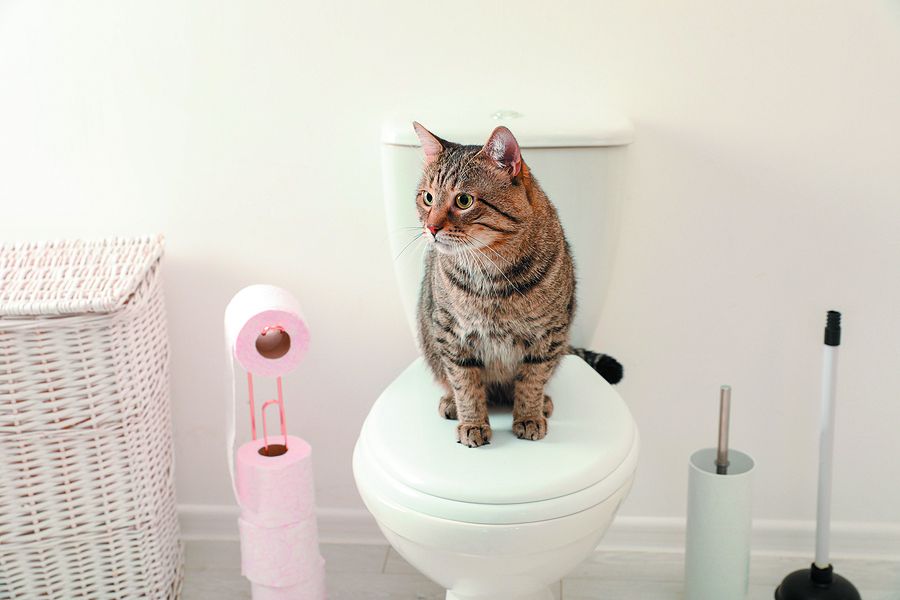Avoid Plumbing Problems: Don't Flush Cat Poop Down Your Toilet - Expert Advice
Avoid Plumbing Problems: Don't Flush Cat Poop Down Your Toilet - Expert Advice
Blog Article
Everybody is bound to have their own individual perception involving Don’t flush cat feces down the toilet.

Introduction
As pet cat proprietors, it's necessary to be mindful of just how we throw away our feline pals' waste. While it may seem convenient to purge pet cat poop down the bathroom, this practice can have detrimental effects for both the atmosphere and human health and wellness.
Alternatives to Flushing
Thankfully, there are safer and extra responsible means to throw away feline poop. Consider the adhering to choices:
1. Scoop and Dispose in Trash
The most common approach of throwing away feline poop is to scoop it into an eco-friendly bag and throw it in the garbage. Be sure to make use of a specialized litter scoop and dispose of the waste immediately.
2. Use Biodegradable Litter
Select biodegradable pet cat litter made from products such as corn or wheat. These trashes are environmentally friendly and can be safely disposed of in the trash.
3. Hide in the Yard
If you have a yard, take into consideration burying feline waste in a marked area away from vegetable gardens and water resources. Be sure to dig deep sufficient to stop contamination of groundwater.
4. Install a Pet Waste Disposal System
Purchase a pet dog waste disposal system particularly made for feline waste. These systems make use of enzymes to break down the waste, decreasing smell and environmental effect.
Wellness Risks
Along with environmental issues, purging pet cat waste can also present wellness risks to human beings. Cat feces may consist of Toxoplasma gondii, a bloodsucker that can cause toxoplasmosis-- a potentially serious health problem, specifically for pregnant women and individuals with damaged immune systems.
Environmental Impact
Purging pet cat poop presents harmful pathogens and parasites into the water system, posturing a significant risk to water ecological communities. These contaminants can negatively impact marine life and compromise water quality.
Conclusion
Responsible animal possession prolongs beyond supplying food and sanctuary-- it additionally involves correct waste monitoring. By avoiding purging pet cat poop down the commode and going with different disposal approaches, we can decrease our ecological impact and secure human health.
Why Can’t I Flush Cat Poop?
It Spreads a Parasite
Cats are frequently infected with a parasite called toxoplasma gondii. The parasite causes an infection called toxoplasmosis. It is usually harmless to cats. The parasite only uses cat poop as a host for its eggs. Otherwise, the cat’s immune system usually keeps the infection at low enough levels to maintain its own health. But it does not stop the develop of eggs. These eggs are tiny and surprisingly tough. They may survive for a year before they begin to grow. But that’s the problem.
Our wastewater system is not designed to deal with toxoplasmosis eggs. Instead, most eggs will flush from your toilet into sewers and wastewater management plants. After the sewage is treated for many other harmful things in it, it is typically released into local rivers, lakes, or oceans. Here, the toxoplasmosis eggs can find new hosts, including starfish, crabs, otters, and many other wildlife. For many, this is a significant risk to their health. Toxoplasmosis can also end up infecting water sources that are important for agriculture, which means our deer, pigs, and sheep can get infected too.
Is There Risk to Humans?
There can be a risk to human life from flushing cat poop down the toilet. If you do so, the parasites from your cat’s poop can end up in shellfish, game animals, or livestock. If this meat is then served raw or undercooked, the people who eat it can get sick.
In fact, according to the CDC, 40 million people in the United States are infected with toxoplasma gondii. They get it from exposure to infected seafood, or from some kind of cat poop contamination, like drinking from a stream that is contaminated or touching anything that has come into contact with cat poop. That includes just cleaning a cat litter box.
Most people who get infected with these parasites will not develop any symptoms. However, for pregnant women or for those with compromised immune systems, the parasite can cause severe health problems.
How to Handle Cat Poop
The best way to handle cat poop is actually to clean the box more often. The eggs that the parasite sheds will not become active until one to five days after the cat poops. That means that if you clean daily, you’re much less likely to come into direct contact with infectious eggs.
That said, always dispose of cat poop in the garbage and not down the toilet. Wash your hands before and after you clean the litter box, and bring the bag of poop right outside to your garbage bins.
https://trenchlesssolutionsusa.com/why-cant-i-flush-cat-poop/

Do you appreciate reading up on How to Dispose of Cat Poop and Litter Without Plastic Bags? Write a remark further down. We will be pleased to know your ideas about this blog entry. Hoping to see you back again soon. Are you aware of somebody else who is excited about the topic? Feel free to promote it. I treasure reading our article about Don’t flush cat feces down the toilet.
Click Here Report this page